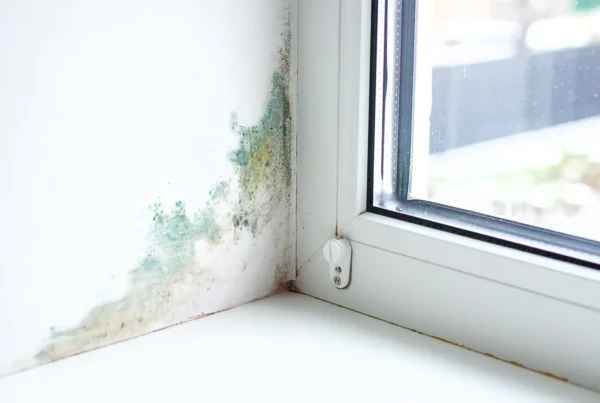If you’ve got a child with PANS/PANDAS, you’re looking for answers.
PANS/PANDAS are autoimmune conditions, which means the immune system has gotten off-track and has started attacking the cells of the body. But before we get into what happens when the immune system goes wrong, it’s important to understand what happens when it works correctly. So in this two article series, we’re looking at how all the mechanisms of the immune system work together. If you missed part 1, you can find it here.
Last time, we took a broad view of the immune system. We looked at how it works, what triggers it to go on attack, and how the lymphatic system gets involved. We talked about which organs in the body work together and how they help you fight off the unwanted invaders called antigens.
This week we’re going to pull out the microscope and look at the immune system on a cellular level. The complexity of the microscopic battle that goes on in your body may surprise you!
THE CELLS OF THE IMMUNE SYSTEM
The wide variety of cells that work together in your immune system have one goal: to keep you healthy by protecting you from foreign substances that may cause harm. These cells work together to:
👓 LOCATE UNWANTED INVADERS
🚩 TAG THOSE INVADERS FOR DESTRUCTION
💥 DESTROY THEM
💣 CREATE WEAPONS READY TO DESTROY THE INVADER IF IT SHOWS UP AGAIN.
Let’s look at the different types of cells involved in the body’s immune response to antigens.
ANTIBODIES
Antibodies are Y-shaped proteins that are part of the adaptive immune system (more on the adaptive immune system next time). That means they seek out specific antigens and bind to them. They search for invading viruses, bacteria, fungi, and parasites. The job of the antibody is to find its corresponding antigen and attach itself. Some match exactly, while some fit more like a “skeleton key”.
When antigen and antibody interlock, the antibody has done its job. The antigen is marked for destruction by the immune system. Antibodies are only able to mark their targets. They cannot penetrate the cells and are therefore otherwise powerless.
Antibodies are also called immunoglobulins (Ig), and come in 5 variations: IgG, IgM, IgA, IgD and IgE. They all have the characteristic Y shape, but they serve slightly different functions.
LYMPHOCYTES
Lymphocytes are small white blood cells that control the specificity of the immune response. The immune system labels substances as bad or good. But it’s more complex than that. Different antigens require different responses. Lymphocytes help tailor the immune response to match the specific antigen that is threatening.
In a healthy adult, lymphocytes make up 20–40% of white blood cells. You can find lymphocytes circulating around the body, but most of them are concentrated in the organs and tissues of the lymphatic system.
TYPES OF LYMPHOCYTES
There are two main types of lymphocytes:
- B lymphocytes, called B cells — mature in the bone and secrete antibodies into the body’s fluids. B cells produce antibodies. Then these antibodies can attach themselves to a specific antigen. Each B cell is programmed to make one antibody. But when a B cell meets its corresponding antigen, it produces plasma cells which produce millions of identical antibodies.
- T lymphocytes, called T cells — mature in the thymus and come in a wide variety. These cells are able to attack antigens directly. They also help control the immune response by releasing chemicals called cytokines.
T CELLS
There are 4 types of T cells:
Helper T cells communicate with other cells and increase B cell activity. They also activate phagocytes and other T cells. Helper T cells oversee the cytokines as they send out signals to activate B cells. They also improve the efficiency of other immune cells.
Regulatory T cells coordinate immune response. They send out signals for increased activity early in an infection. Then they call for a decrease in the reaction once an infection is under control.
Killer T cells attack cells carrying foreign molecules on their surface. These are especially important for killing viruses — which insert themselves into healthy cells.
Memory T cells remain in the body after an initial infection and retain a “memory” of the antigen so the body is equipped to fight next time it shows up.
CYTOKINES
Immune cells communicate with one another by releasing chemical messengers called cytokines. Cytokines are proteins that help call other immune cells to the area. These cells help control the entire immune response.
INTERLEUKINS
Interleukins are a type of cytokine that plays an important role in both the activation and the differentiation of immune cells. They turn immature cells on and off. Interleukin 2 (IL-2) is responsible for activating the production of T cells.
As I mentioned, the immune system is incredibly complex. If your head is spinning at the specifics, don’t worry. There’s no quiz at the end of the article. I wanted to get into the nitty gritty so you could get an idea of how intricate the immune system really is.
But if you’d like the Cliff’s Notes version of the workings of the immune system, I’ll share with you my favorite analogy on how B cells and T cells work.
LAUREN’S INCREDIBLY OVER-SIMPLISTIC EXPLANATION OF B CELLS AND T CELLS
Imagine there is an apartment building on fire. The B cells are the pedestrians jumping up and down outside the building yelling “FIRE!! FIRE!!” They don’t really do anything other than draw attention to the burning building.
The T cells are the firefighters who organize and put the fire out.
HOW DOES THE IMMUNE SYSTEM IMPACT PANS/PANDAS?
This is really important because in immune disorders like PANS and PANDAS, we see far too many B cells, and not enough T cells — particularly T regulatory cells, which call for the immune response to calm down once things are under control.
So we have lots of immune cells screaming “FIRE!!,” but not enough immune cells to either stop the screaming, or to organize and actually put out the fire.
WHERE DOES THIS LEAVE US?
🚨 Immune mayhem = Autoimmunity 🚨
🔥 The unrelenting fire = Inflammation 🔥
Next time we’ll dig deeper into what happens in an autoimmune response. And more importantly, we’ll talk about what you can do to help your child with PANS/PANDAS.
How I Can Help You and Your Family
✔ If you are still searching for a diagnosis and want more clarity on whether your child might have PANS or PANDAS, take our free PANS/PANDAS Symptom Assessment. Explore how your child’s symptoms might fit into the official PANS and PANDAS diagnostic criteria, and gain valuable knowledge on how the process works. To take the symptom assessment, click here.
✔ For easy to implement approaches to reducing inflammation in your child’s body, download my free eBook, Healing from PANS/PANDAS and Autoimmune Encephalitis. Learn why healing your child’s gut is always step one when it comes to brain health, how the brain detoxifies and what to do to facilitate this process, the role of the autonomic nervous system in healing, and so much more.! To download your free copy, click here.
✔ Sign-up for my email newsletter – you will receive tons of research and actionable information in this biweekly resource
✔ Join the private Facebook community for parents of children with PANS/PANDAS and other neuroinflammatory brain conditions
✔ And finally, if you are interested in getting to the root of your child’s diagnosis and reversing symptoms for good, join me in my Foundations in Healing Jumpstart Program. The Foundations Program is a highly mentored, 8-week learning intensive for parents of children with inflammatory brain conditions like PANS/PANDAS, autism, ADHD, anxiety/depression, and Lyme. In addition to gaining access to my proven methodologies and proprietary knowledge, you will also be learning directly from me in an intimate group setting. For more on the Jumpstart Mentorship program, click here.
And remember, your child’s body is hardwired to heal, we just need to provide the tools. We are here for you!
For more information on the Foundations Program, click here
To hear more about what former participants are saying, click here.
Resources
https://www.livescience.com/antibodies.html
https://medlineplus.gov/ency/article/000821.htm







